VICTORIA 8 BRITISH FIRE BRIGADE
FOUNDATION DEED
In the city of Lima on this twelfth day of February 1873, on these premises which will be the station of this fire brigade, with Mr. George E. Clissold present as Chair of the Organizing Committee of the British Fire Brigade, he states that his efforts have met with success and thus he has completed what he set out to do in establishing a Fire Brigade. He states that the firefighters have been sufficiently prepared and are thus ready to take up their duties. The Organizing Committee has secured from the Lima District police station a hand-drawn pump which is on the premises together with the necessary implements, namely: hose carriage, ladders and used hoses that we have repaired so that they are fit for use, nozzles, canvas buckets, iron connections, axes and lanterns, which we are accepting in order to provide better service, at the request of our engineer Mr. William Sangster, who requested that this brigade bear the name of Her Majesty Queen Victoria. It is my duty to inform you that Her Majesty has granted this request. I therefore declare that the British Fire Brigade Victoria has been founded on this day, the 12th of February 1873, and that as of this day it will officially begin its labour. I further declare that all those who were members of this committee are to be considered founding members. Those who are elected as members of the first Provisional Board will remain so until elections are called. In witness whereof we sign this deed,
|
Carlos Monroow Francis Douglas W. Kinsley Henry Monrroe Thomas Simpson R. Caw George Clissold William Sangster John Wilson Santiago Hayes W. Vakley Carlos Price |
José Porthanse
John Watson Henry Davis Andrés Dunn William Smith J. Herr Roland Frazer G. Martín William Shuttleton Guillermo Steed David Lawson George Campbell Alejandro Mac Bride |
PROVISIONAL BOARD Commander George Clissold Captain John Watson 1st Assistant officer William Smith 2nd Assistant officer William Sangster 3rd Assistant officer Andrés Dunn Secretary John Wilson |
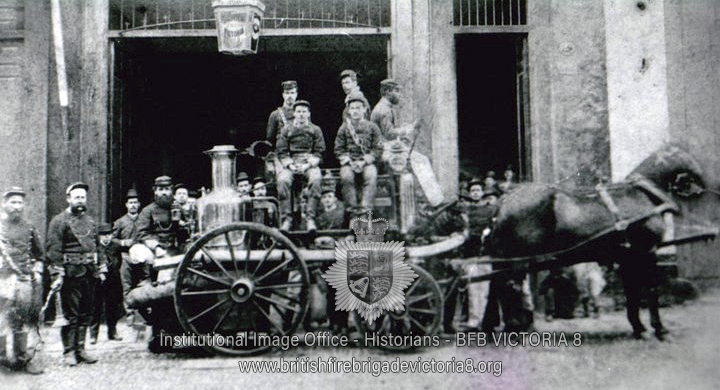
HISTORY
It is said that our Fire Brigade was born on the 1st of April 1866, when a group of British citizens who were resident in Lima responded to the call of the Mayor of Lima, Pablo Antonio Salinas, requesting the support of the people in organizing fire brigades in order to defend the cities of Lima and Callao from the imminent blockade and attack of the Spanish squadron that had just bombarded the Chilean port of Valparaiso. To this end, the government of General Mariano Ignacio Prado organized the defence of Callao, setting up emergency hospitals, blood banks and teams of doctors and nurses. The residents of the Italian and French communities also mobilized and in April 1866 founded the Roma and France fire brigades respectively. Similarly, the employees of the municipality of Lima backed and organized the Municipal Lima fire brigade.
In 1866, a sizeable group of British residents formed the Santa Ana Fire Brigade, which actively participated in the defence of Callao during the Battle of Callao on the 2nd of May 1866 together with the other brigades of Lima and Callao that were present on the battlefront. The first firefighting equipment the Santa Ana had was a hand-drawn pump that was available in La Recoleta police station, ordered by the then government and handled by the police watchmen. There are stories that Santa Ana was in fact founded on the 1st of April or the 12th of February of 1873. Other sources state that when the conflict arose in 1866, the residents of the Santa Ana neighbourhood in Lima organized a fire brigade, and that perhaps they were British. What we do know is that once the conflict with Spain was over, Santa Ana, Municipal Lima, Republica, Sociedad de Artesanos, Gran Pacifico, Bomba Portuguesa and other fire brigades that were set up due to the 1866 conflict were short-lived and ceased their activities, with the exception of Municipal Lima that is still in existence today as the Lima N° 4 brigade. It would appear that the British citizens who had belonged to the defunct Santa Ana brigade continued to meet sporadically with a view to starting it up again or establishing a new brigade. They decided to follow the example of the Roma, France and Lima brigades and in 1873 offered their volunteer services to the government, this time under the British flag. They established an organizing committee chaired by George E. Clissold, who took the necessary steps and coordinated with the local police station who allocated the brigade some hand-drawn pumps and a hose carriage, ladders and some used hoses, as well as nozzles, canvas buckets, axes and adzes.
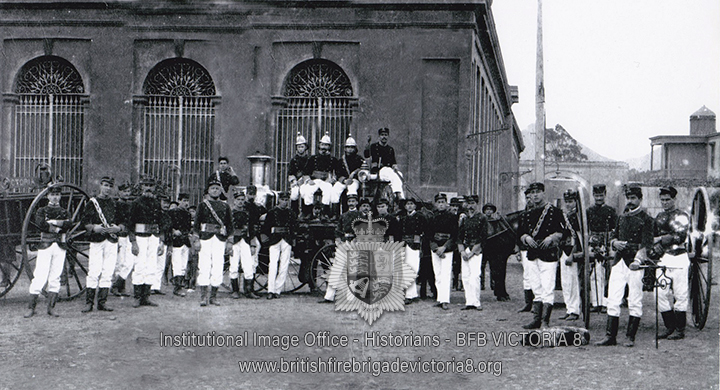
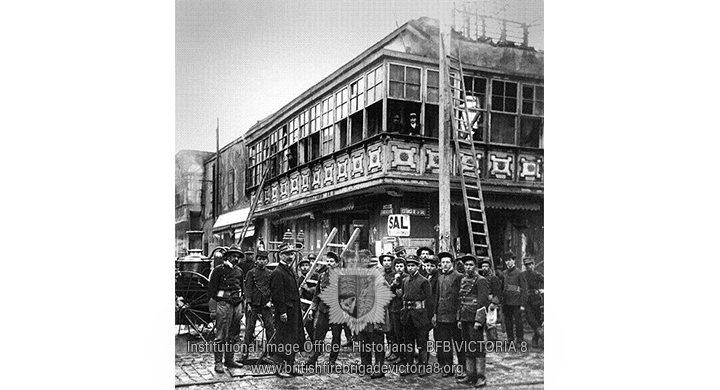
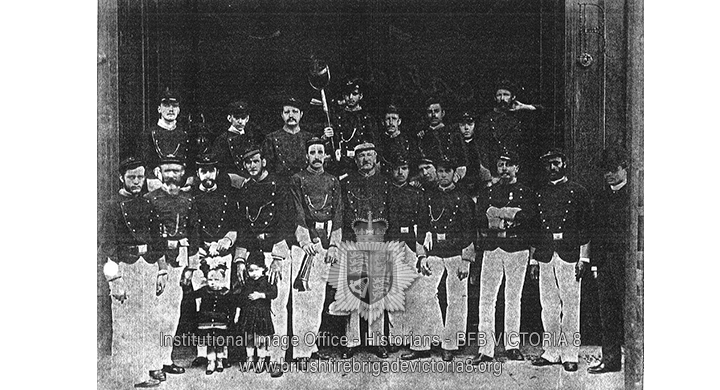
It is a matter of record that there was a heated debate about the name of the brigade. Numerous British subjects suggested all kinds of names until William Sangster solemnly proposed that the brigade be named after Her Majesty Queen Victoria. This appropriate proposal was unanimously approved. The relevant steps were taken immediately to request the consent of Queen Victoria. As can be seen in the foundation deed, the request prospered. The British Fire Brigade Victoria was solemnly established on the 12th of February 1873, ready to put out fires and to save lives and properties. At that time there was no need for official recognition because the Board of Directors of Firefighters did not as yet exist. It was sufficient for the Fire Brigades to be established with their respective equipment and materials and to inform the other Fire Brigades in the city for coordination purposes. The newly established British Fire Brigade similarly informed the government, the mayor of the city of Lima, the Director of the Beneficencia Pública de Lima (Welfare Office) and other organizations. The brigade was known in Spanish as Brigada Inglesa de Bomberos Victoria and was allocated N° 4 since it had been established after Lima Nº 3, in accordance with the system of numbering fire brigades in the capital consecutively as they were founded. Callao was not included in this numbering system; it had its own volunteer fire brigades that were organized independently of those of Lima. It was in 1976 that Victoria Nº 4 became Victoria Nº 8 as it was the eighth fire brigade to be established in Peru, with the first having been Unión Chalaca in Callao, which was always Nº 1. This reorganization was carried out nationwide during the term of the commander in chief of the CGBVP (Peruvian Volunteer Firefighters Corps), Brigadier General of the Peruvian Fire Brigade Humberto Arias Fiscalini.
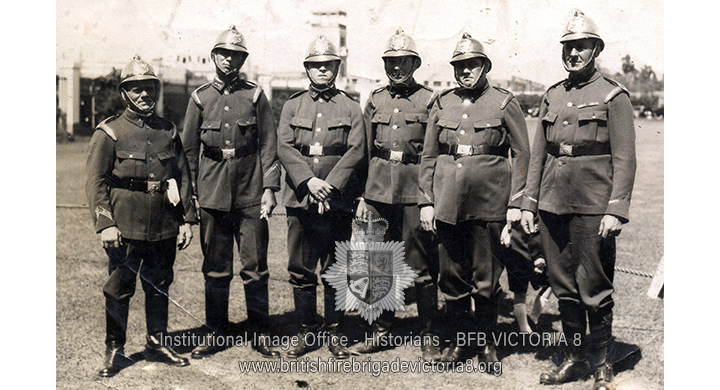
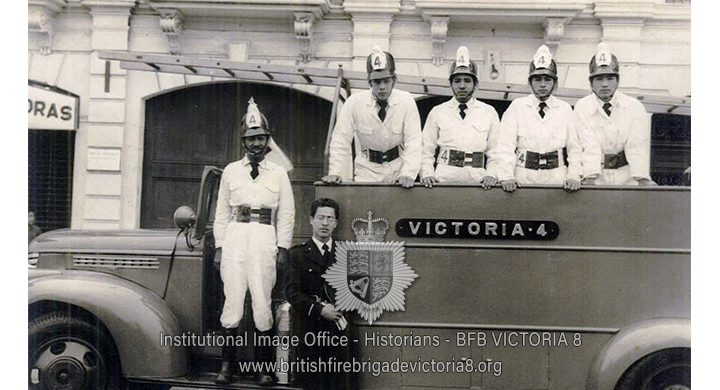
The first station of Victoria Nº 4 was in rented premises in Calle La Toma, which today is the first block of Jirón Arica. The fire station was on the ground floor of the premises and the Club Alemán (German Club) was upstairs, which gave rise to many members of Victoria being Germans who were related to British families. This was the station for eleven years.
In 1895, the Brigade moved to rented premises on Calle Divorciadas, which years later became Berghusen Undertaker’s, and remained there until 1899 when it moved to Calle Veracruz Nº 67, which was subsequently the offices of Empresas Eléctricas Asociadas. At that time, the pumps were drawn by hand and the line was laid with riveted leather hoses that weighed about 70 lb. for every fifty foot length of hose. Subsequently things improved when Victoria was able to import a modern Merryweather British steam engine. The Victoria fire station later moved to Calle Pastrana Nº 622, also known as Calle de Matienzo and from there to Calle Montevideo Nº 157 and then to Avenida Iquitos Nº 442, in a house rented from the Borea family, close to Nuestra Señora de La Victoria church.
In 1956, when it was at the Avenida Iquitos premises, Mr. Benjamín Monteblanco, mayor of the district of La Victoria, offered the Brigade the chance of their own premises in La Victoria district, coordinating with the Brigade Commander, José Luis Miranda. Sadly, the building that was offered was not structurally suitable for a fire brigade to operate so this marvellous opportunity came to naught. Today, the Victoria brigade is located in Calle Manuel Cisneros Nº 597 in the district of La Victoria, in premises allocated by the district council of La Victoria for use only as long as it functions as a fire brigade and serves the community of La Victoria.
It is worth noting that many people believe that the name Victoria is due to the fact that the Brigade is located in the district of that name. That is not in fact the case; the name is due exclusively to the British sovereign Queen Victoria who, as is stated in the foundation deed, granted permission for the use of her name in 1873.
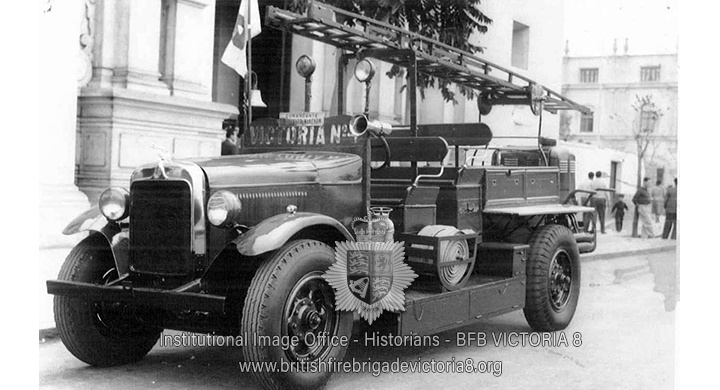
In the years since it was established, the Brigade has not only helped to put out fires but has gone beyond the call of duty, providing significant service as “Urban Guards” during the time that Lima was occupied by the invading Chilean armed forces during the War of the Pacific. The Urban Guard was built on the three foreign fire brigades that existed in Lima at the time; the City Council of Lima drew up the regulations for this noble service. In 1881, when the Chilean forces reached the centre of the capital city, vandalizing mobs arose, looting and setting fire to dwellings and trade establishments around the Plaza del Mercado (Market Square). The Fire Brigades had to deal with these attacks, defending their materials and their very lives with firearms.
It should be noted that the station of the Victoria company on Calle Pastrana (Matienzo) was also the location of the High Command of the Volunteer Firefighters of Lima since this position was held by commander Roberto Wakeham who also organized the Victoria brigade and was its active Commander for 32 years. On his death, the wake was held at the Salvadora Lima Nº 5 station and he was buried in the British cemetery in Bellavista.
As time went by, like other fire brigades of foreign origin, the Victoria brigade ceased to be known as “the English brigade” because most of its members were Peruvian and only a small percentage bore an Anglo-Saxon surname. However, the memory of the British subjects who were so generous to the land that had given them a new home will never die.
In 1887, the Victoria brigade increased its operating capacity by acquiring the famous Britannia steam engine, which served in innumerable fires. The brigade was present at the fire of Hotel Italia in Callao in 1892. In 1914, the Victoria light steam engine was converted by being placed on a truck chassis in order to compete with the fast, modern engine of the Internacional brigade. It thus became one of the first engines that moved by mechanical traction, saving effort and man hours.
In 1915, the uniform of the Victoria firefighters reflected the colours of the Union Jack, with pale red suits and navy blue caps; it was subsequently changed to beige with bronze epaulettes and helmets, in the French style. In 1922, a new motorized fire engine built by the brigade’s own engineers was christened in Plaza Unión, during the traditional Firefighters’ Party of Lima, a tradition that is no longer observed.
The Brigade is currently part of the 4th Lima Department Office of the CGBVP (Peruvian Volunteer Firefighters Corps) and has modern equipment for firefighting, rescue and medical emergencies, as well as a well-trained team.
